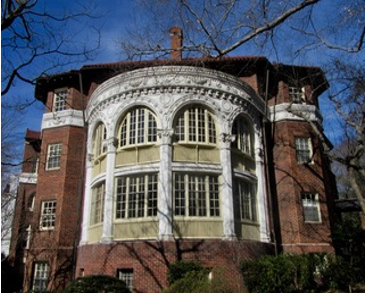The Tuscany and Lombardy Cooperatives

Tuscany and Lombardy
The Tuscany-Lombardy community’s beauty and uniqueness endures as strongly today as it did nearly one hundred years ago
In 1913, architect Clyde Nelson Friz (1867–1942) purchased a tract of land from the University Parkway Company for $12,000 in order to build a series of Italian Renaissance-style apartment buildings. The first building, The Lombardy, was erected in 1915. The Tuscany was erected in 1918. The published cost of both apartment buildings was $200,000.
Friz sold the completed Tuscany-Lombardy properties to the newly formed Tuscany-Lombardy Community Corporation (incorporated on August 2, 1920) for $325,000, with a ground rent of $10,500.
Initially, a co-operative plan of ownership gave pre-existing residents leasing apartments the first opportunity to purchase shares in the new corporation before a public offering. Sixty-percent of the thirty-six apartments were sold in the initial offering while the remaining forty-percent of apartments were rented for the purpose of paying off the mortgage, ground rent, and expenses.
Apartments sold in the range of $7,500 to $12,000 (five times the yearly rental price of each apartment). The theory behind this unique operating plan was that shareholders would have an apartment free of expenses, as rents would provide revenue. Apartments were advertised as “high class” apartments with large porches, sun parlors, Frigidaires, a telephone to the entrance and to the superintendent’s office, individual garages, a bountiful supply of hot water thermostatically controlled, a room (if desired) for a maid; all in a woodland environment just minutes from downtown.
Clyde Friz’s ingenious engineering skills seamlessly integrated the two unconventional building designs with the unusually sized lot and atypical topography. Mature trees lining the perimeters of the buildings were spared by the construction. Open court architecture and expansive natural landscape took a front seat, while parking garages were camouflaged to the point of near disappearance.
In 1922, Friz designed his third group of apartments, also in an Italian Renaissance style.